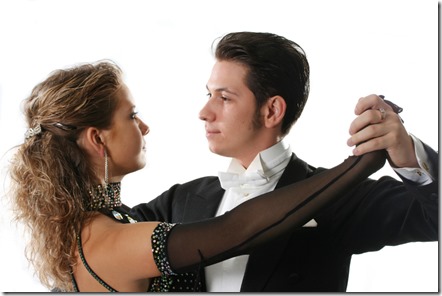Interviews Aren’t A Dance: Don’t Let The Reporter Lead
Wikipedia tells us that “in partner dancing, the two dancers are sometimes not equal. One takes the Lead and the other is the Follow.” As you might have expected, gender often plays a role:
“The Lead (conventionally the male in a mixed-sex couple) is responsible for choosing appropriate steps to suit the music (if it is an improvised dance), and leading the Follow by using subtle signals to complete the chosen steps smoothly and safely.”
The majority of interview subjects approach media interviews as a dance. In their view—conscious or not—the reporter leads the dance through his or her questioning while the interviewee gamely goes in whichever conversational direction the journalist decides.
But good media interviews are not a dance. You are equal to reporters—not a companion who follows their lead.
We see this dynamic in our training sessions often. We might begin with a short lecture about the importance of remaining on message—and for the first few practice interview questions we ask the trainees, they remember to transition back to their main points.
But within a few questions, they forget about their messages entirely and just start answering our questions. We, the reporters, are leading the dance again, and the trainee has abandoned their interview strategy entirely.
It’s easy to understand why that happens. In everyday conversation, we have a more natural give and take, with each party switching turns taking the lead and follow roles. If someone asks us a question, we answer the question.
But media interviews aren’t conversations. They are strategic forms of communication intended to reach and appeal to a specific target audience. Spokespersons who forget that—and who lapse back into conversation mode—are turning the lead role back over to the reporter, voluntarily surrendering their right to be an equal.
Come join us for one of our fast-moving and content-rich media and presentation training workshops! Click here to see our upcoming sessions.




This is great advice, Brad. I consider myself a very polite person, and as such I can attest to how easy it is to fall into this “dance.” I work hard to remember how to bridge to my messaging in interviews. Our CEO did a pretty nice job of this during a recent interview, when the reporter said to him after his answer, “So, you’re not going to answer my question.” He reiterated his message as actually being the answer to her question, and got her to think about it that way. I was pretty impressed. But good advice to remember–your goals and the reporter’s goals are not likely the same.
Hi Art,
Thanks very much. It sounds like your CEO did a perfect job of responding to the reporter’s pressure. Sometimes reporters are right to call out an evasion, but at other times (such as the example you described), they’re really saying “So, you’re not going to answer my question the way I wanted you to.”
Thanks, as always, for reading and commenting.
Brad
Great reminder to all clients Brad. And for Art’s comment, you can STILL be polite but help lead the interview. Very often reporters are looking for you to lead the conversation — maybe they’re not prepared (for a number of valid reasons). You’re being helpful to them by getting to your main points, rather than wasting time hoping the reporter asks the right question so you can reveal your big nugget of news.
Great points, Michelle. You picked up on a critical point that I strongly believe in: A well-prepared spokesperson isn’t an obstacle to reporters, but a helpful source. There’s nothing obstructionist about organizing your thoughts into key messages prior to an interview.